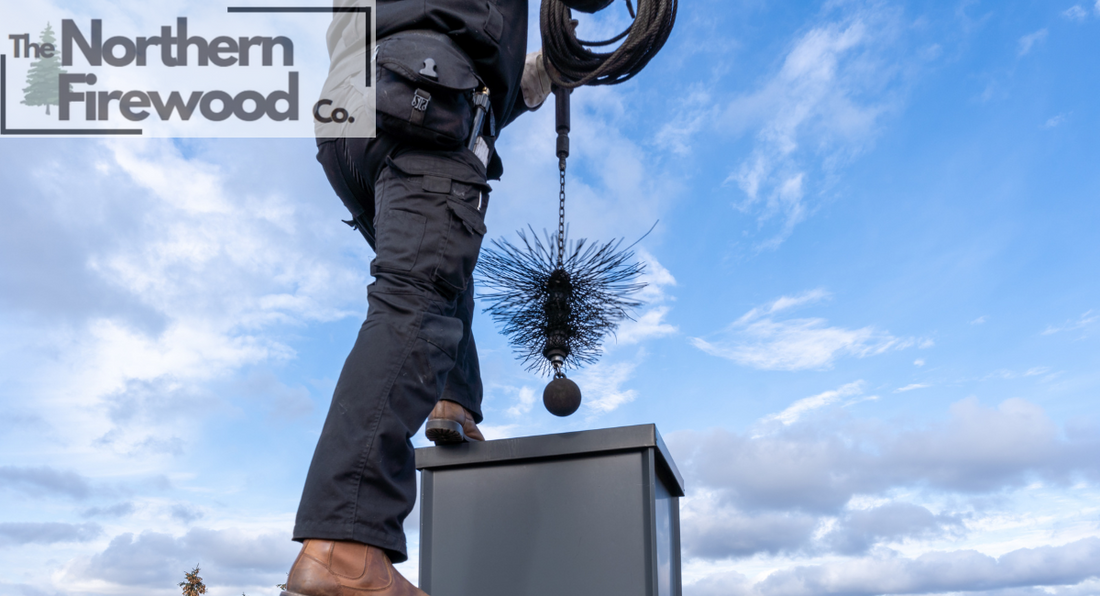
The Ultimate Guide to Wood Burner Summer Maintenance: Everything You Need to Know
Share
Every year, as the warmer months roll in, HETAS reminds us to perform essential summer maintenance on our wood burning stoves. If you value keeping your stove in good working order—and want to minimise both indoor and outdoor pollution—this advice is absolutely crucial. Keeping your stove well-maintained not only ensures it remains a reliable, efficient, and safe source of heat but also helps protect the environment and your health.
You can see their advice here: HETAS Spring Maintenance Advice
Why Is Summer Maintenance So Important?
Wood burners are a fantastic way to heat your home, offering unbeatable warmth and an inviting atmosphere. But, like any appliance, they require regular care to perform at their best. Neglecting your wood burner can lead to poor efficiency, increased emissions, and even dangerous hazards such as chimney fires. By following a structured maintenance routine, you’ll extend the life of your stove, keep it looking great, and enjoy peace of mind.
Below, you’ll find a comprehensive, step-by-step guide to summer maintenance—the only resource you’ll need to keep your wood burner in top condition.
1. Clearing Out Ash and Soot: The Foundation of Efficiency
After months of use, ash and soot accumulate inside your stove. These residues can block airflow, reducing efficiency and increasing emissions. Regular cleaning is essential, especially before shutting down your stove for the summer.
- When to Clean: During heavy use, remove ash weekly. In less active periods, a thorough clean every few weeks is sufficient.
- How to Clean: Use a soft brush and ash pan, or a specialised ash vacuum for convenience. Always ensure the stove and ashes are completely cool before cleaning to prevent burns or accidental fires.
- Pro Tip: Leaving a thin layer of ash in the firebox can actually help insulate the next fire and improve combustion efficiency—but never let it build up excessively.
2. Clean the Glass for a Clear View
A clean glass door not only enhances the ambience but also allows you to monitor the fire for safety and efficiency.
- Cleaning Methods: Use a damp cloth or newspaper dipped in cold ash—the mild abrasiveness helps remove soot without scratching. For stubborn deposits, use a commercial wood burner glass cleaner.
- Frequency: Wipe the glass after every few uses, or whenever visible soot builds up.
3. Inspect and Replace Seals and Gaskets
The seals around your stove’s door and access panels are vital for maintaining efficient burning and preventing smoke leaks.
- Check Annually: Inspect all seals for cracks, brittleness, or gaps. If you notice a draft or smoke escaping, it’s time to replace the seals.
- Seal Replacement: Replacement kits are readily available from stove manufacturers or local suppliers. Follow the manufacturer’s instructions for installation.
- Quick Test: Hold a lit candle near the door seal—if the flame is drawn towards the stove, the seal is compromised and should be replaced.
4. Schedule an Annual Chimney Sweep
A clean chimney is essential for safety and optimal performance. Creosote, a tar-like byproduct of burning wood, can build up and pose a serious fire risk.
- Professional Service: Book a HETAS-registered chimney sweep at least once a year, ideally twice.
- What to Expect: The sweep will remove soot and creosote, inspect for damage, and ensure your flue is clear of obstructions.
5. Check the Firebox and Insulation Tiles
The firebox and its insulation tiles protect your stove’s structure and ensure efficient burning.
- Inspect Regularly: Look for cracks, chips, or significant wear in the firebricks and insulation tiles. Replace any tiles with cracks exceeding 5mm.
- DIY or Professional Help: Some stoves allow easy tile replacement; always consult your manual or a professional if you’re unsure.
6. Wipe Down the Exterior
Keeping the exterior of your stove clean not only improves its appearance but also helps prevent rust and corrosion.
- Cleaning Method: Use a soft cloth and mild cleaner. Avoid abrasive products that could damage the finish.
- Touch-Ups: Some stove care kits include polish or touch-up paint for maintaining the stove’s appearance.
7. Use the Right Fuel
The fuel you burn has a significant impact on your stove’s performance and longevity.
- Seasoned or Kiln-Dried Wood: Only burn firewood wood with a moisture content below 20%. Wet or treated wood produces more smoke, creosote, and pollutants, and can damage your stove.
- Avoid Treated Wood: Never burn painted, varnished, or chemically treated wood, as this can release harmful toxins.
8. Summer Shutdown: Preparing for the Off-Season
When you’re ready to shut down your stove for the summer, take a few extra steps to ensure it’s ready for next winter.
- Leave the Door Ajar: This allows air to circulate through the chimney, preventing moisture buildup and unpleasant odours.
- Check for Rust: Inspect the stove body for rust. If found, gently rub down and repaint (for non-enamelled stoves).
- Store Firewood Properly: Keep your firewood in a dry, covered area away from the stove to prevent mould and maintain quality.
Final Thoughts: Your Maintenance Checklist
To keep your wood burner safe, efficient, and beautiful, follow this checklist:
- Clear out ash and soot regularly
- Clean the glass after every few uses
- Inspect and replace seals and gaskets annually
- Schedule a professional chimney sweep at least once a year
- Check the firebox and insulation tiles for damage
- Wipe down the exterior and touch up as needed
- Use only seasoned or kiln-dried wood
- Prepare your stove for summer shutdown
By following these steps, you’ll ensure your wood burner remains a reliable, efficient, and safe source of warmth for years to come. So, grab your brush, schedule that chimney sweep, and give your stove the care it deserves. Your future self, and your cosy winter evenings, will thank you.
